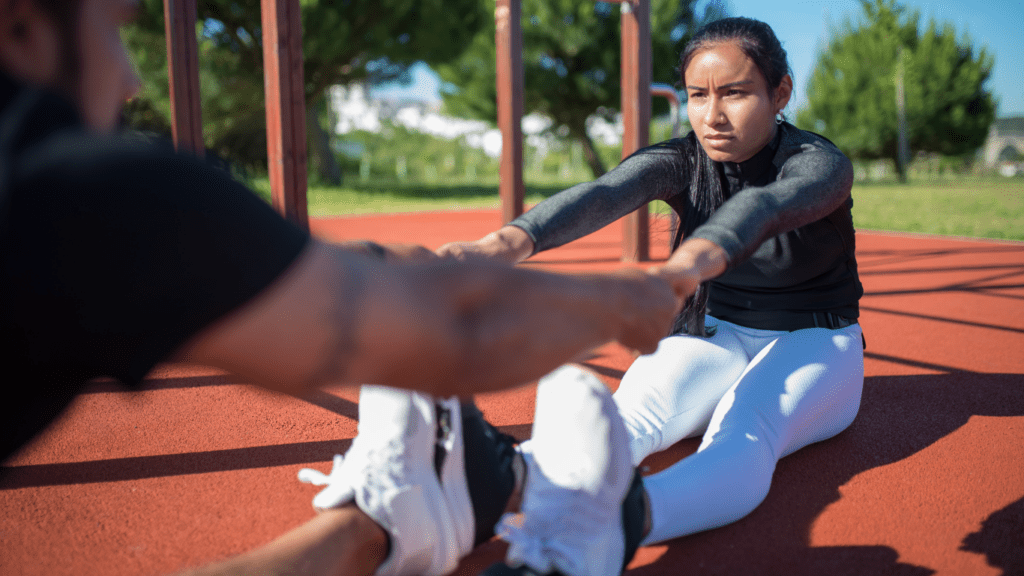Understanding Sustainable Fitness
Creating a fitness routine that endures requires understanding the core principles of sustainable fitness. Let’s delve into what this means and why it’s beneficial.
What Is Sustainable Fitness?
Sustainable fitness focuses on developing habits that integrate seamlessly into daily life. It involves balancing different aspects of physical activity, ensuring each workout is enjoyable yet challenging.
By prioritizing consistency over intensity, individuals maintain a steady exercise regimen over time. Sustainable fitness also includes flexibility to adapt routines as life circumstances evolve, helping to prevent burnout or injury.
Benefits of a Long-Term Fitness Approach
A long-term approach to fitness offers numerous advantages. It promotes overall health by reducing risks of chronic diseases like hypertension, diabetes, and obesity.
Maintaining a regular exercise routine enhances mental well-being, alleviating symptoms of depression and anxiety.
Over time, consistency in physical activity improves strength, flexibility, and endurance, leading to better performance in daily tasks and recreational activities.
Additionally, adopting sustainable fitness habits fosters a positive relationship with exercise, encouraging lifelong adherence.
Key Components of a Sustainable Fitness Routine
Creating a sustainable fitness routine requires focusing on several essential elements. These components ensure that the routine remains enjoyable, balanced, and effective for the long term.
Consistency Over Intensity
Maintaining a regular exercise schedule proves more beneficial than occasional high-intensity workouts. I recommend setting achievable goals that encourage daily activity.
For instance, incorporating 30 minutes of moderate exercise most days of the week builds a habit without overwhelming. According to the
American Heart Association, engaging in at least 150 minutes of moderate-intensity aerobic activity weekly yields significant health benefits. Consistency fosters long-term adherence and reduces the risk of injury.
Integration into Daily Life
Seamlessly integrating fitness into daily routines enhances sustainability. Small choices like taking the stairs instead of the elevator or biking to work add up.
I find that merging exercise with daily tasks, such as walking during phone calls or doing bodyweight exercises while watching TV, maximizes time efficiency.
Scheduling workouts at convenient times and treating them as non-negotiable appointments helps turn fitness into a regular part of the day. Taking these steps makes maintaining a fitness routine less of a chore and more of a natural part of life.
Setting Achievable Fitness Goals

Setting achievable fitness goals ensures long-term adherence to your routine. Balanced goals promote motivation and prevent burnout.
Realistic Goal Setting Strategies
Define clear, specific goals to stay focused. Begin with small, manageable objectives. Gradually increase complexity as you progress.
Adopt the SMART criteria:
- Specific: Pinpoint exact activities (e.g., running) and their frequency.
- Measurable: Quantify progress (e.g., running 5 miles per week).
- Achievable: Ensure goals suit your fitness level.
- Relevant: Align goals with personal interests.
- Time-bound: Set deadlines to maintain accountability.
Break down long-term goals into smaller milestones. Use a fitness journal to track results.
1. Daily Steps:
- Start with 5,000 steps daily.
- Increase to 10,000 steps within three months
2. Running:
- Run for 20 minutes twice a week.
- Extend to 30 minutes three times a week after one month.
3. Strength Training:
- Perform full-body workouts twice weekly.
- Add an extra session after six weeks.
4. Flexibility:
- Stretch for 10 minutes daily.
- Incorporate yoga sessions twice a week within two months.
5. Hydration:
- Drink 8 glasses of water daily.
- Increase to 10 glasses after consistent two-week completion.
Setting realistic goals lays the foundation for a sustainable fitness routine. Start simple, stay consistent, and adjust goals as you progress toward optimal health and fitness.
Tools and Resources to Help
Creating a sustainable fitness routine involves leveraging the right tools and resources. Using technology and community support can significantly enhance your fitness journey.
Apps and Trackers
Fitness apps and trackers play a crucial role in sustainability. Apps like MyFitnessPal, Strava, and Nike Training Club offer personalized workout plans, nutrition guidance, and progress tracking.
Wearable trackers such as Fitbit and Apple Watch monitor vital statistics, including heart rate, sleep patterns, and calories burned. These tools provide real-time feedback, helping users stay motivated and informed about their fitness levels.
Community and Support Systems
Community and support systems boost motivation and accountability. Joining local fitness groups or online forums like Reddit’s r/fitness or Sweat Nation connects you with like-minded individuals.
Participating in group workouts, fitness challenges, or virtual classes offers both social interaction and encouragement. Surrounding yourself with a supportive network ensures consistent effort and enjoyment in your fitness routine.
Overcoming Common Challenges
Overcoming challenges is key to maintaining a sustainable fitness routine. Addressing common issues ensures consistency and long-term success.
Staying Motivated
Staying motivated requires setting clear, achievable goals. I use the SMART criteria: Specific, Measurable, Achievable, Relevant, and Time-bound. Tracking progress through apps and journals helps.
Fitness apps like MyFitnessPal, Strava, or Nike Training Club keep me on track. Join local fitness groups and online forums to connect with others. Group workouts and community challenges boost motivation.
Adapting to Life Changes
Life changes can disrupt routines, so preparing is essential. Flexibility in the fitness schedule helps. When facing time constraints, I switch to shorter, high-intensity workouts.
If health issues arise, I consult healthcare professionals before adjusting my regimen. Travel requires portable equipment like resistance bands or bodyweight exercises, ensuring continuity. Consistently adapting helps maintain the routine amidst life’s fluctuations.




